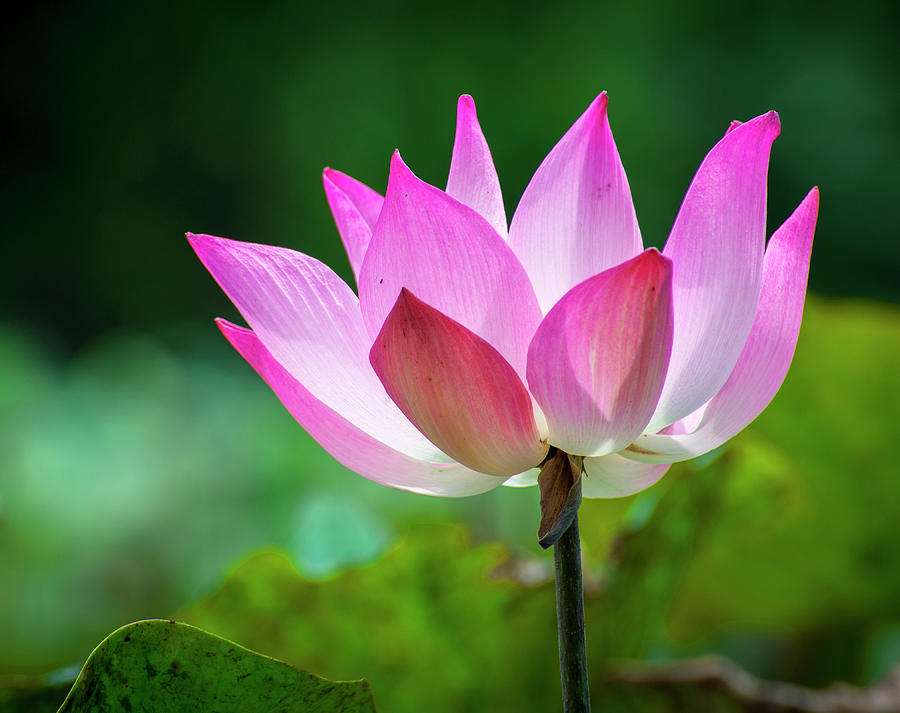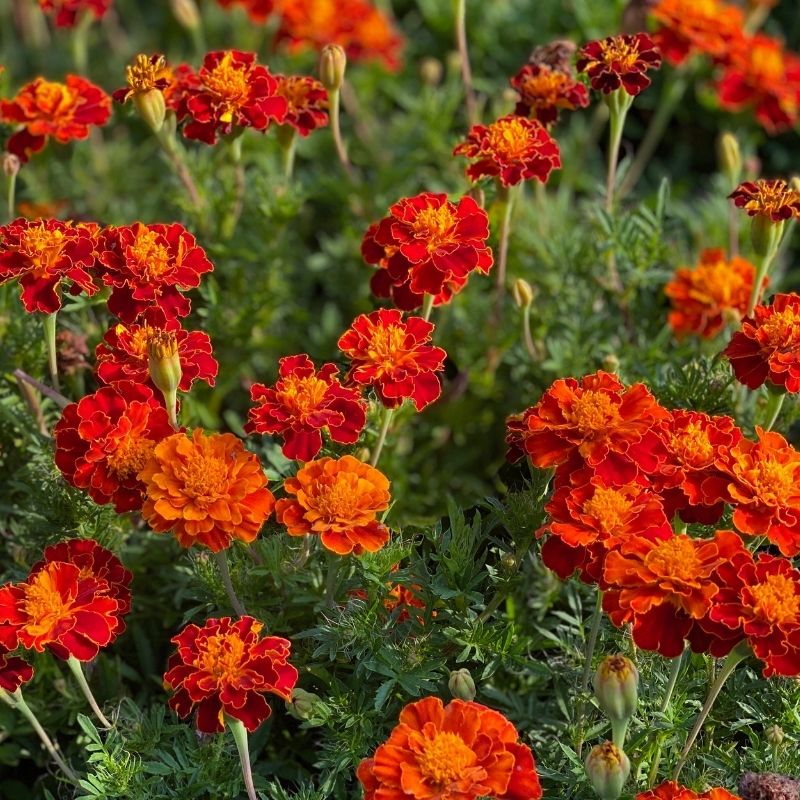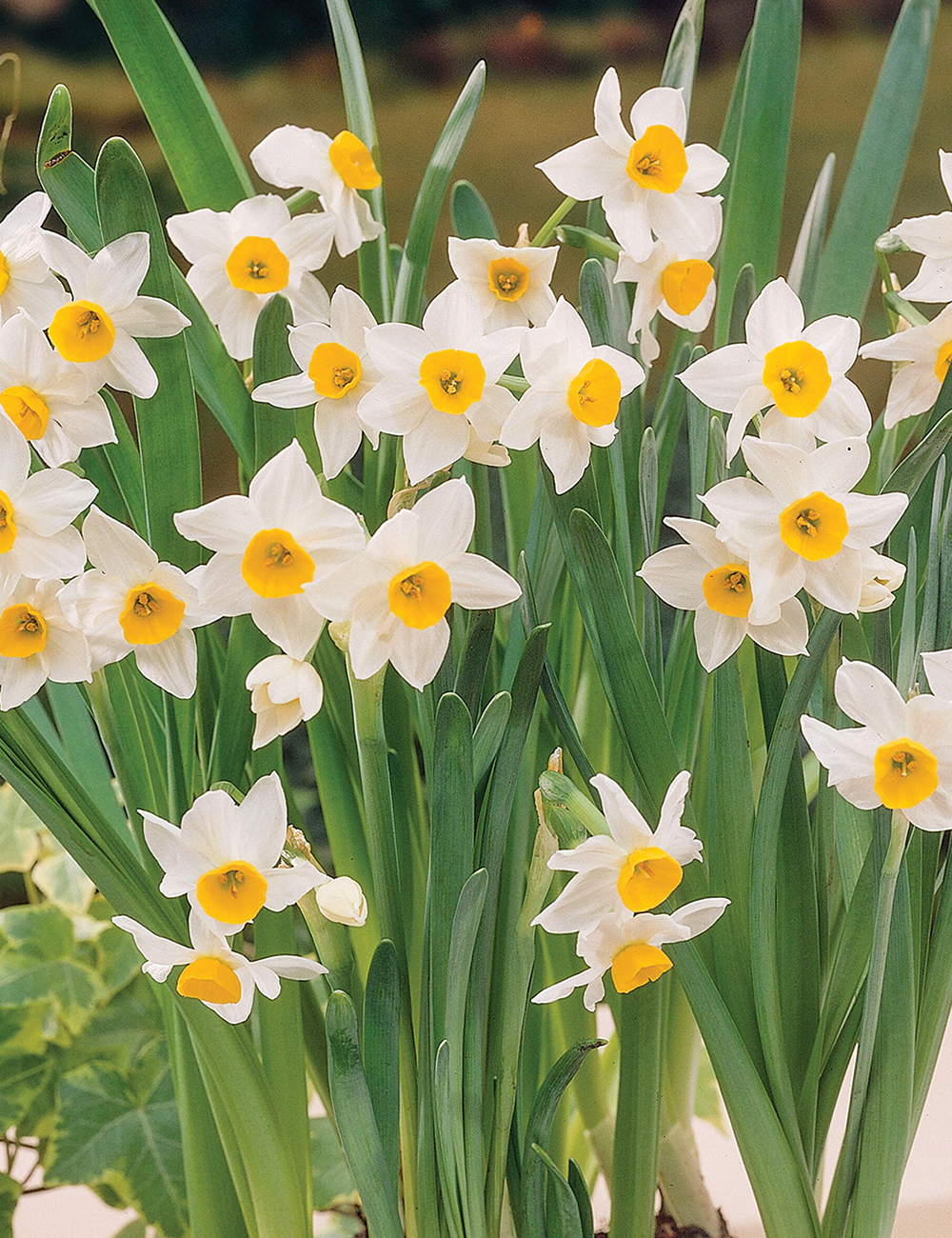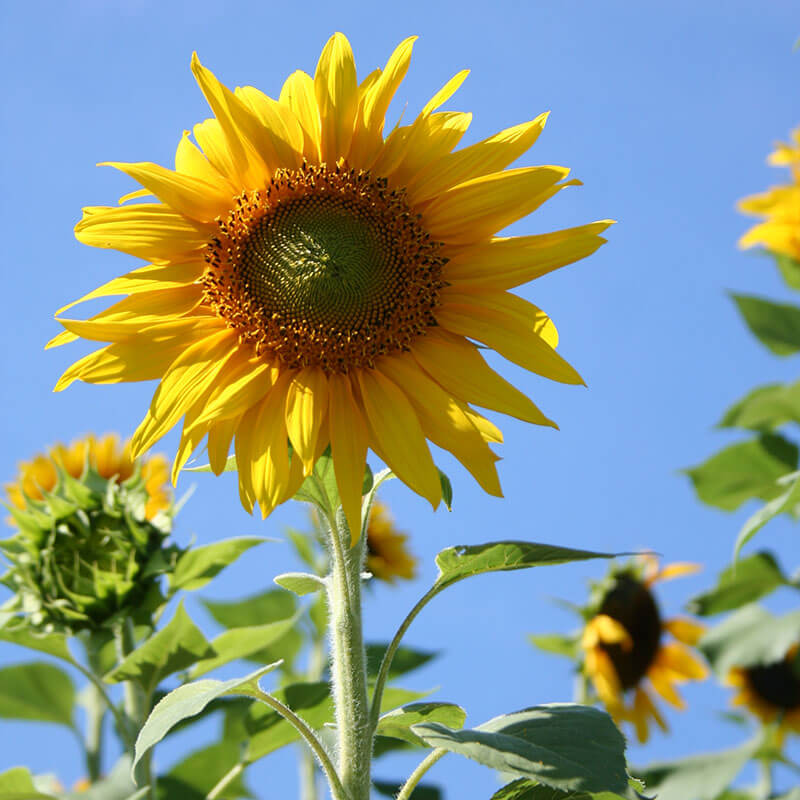The beauty and symbolism of flowers have been appreciated by humans for centuries. From ancient civilizations to modern times, flowers have held a special place in our hearts and cultures. Among the many meanings associated with different flowers, one that stands out is the symbol of life. In this article with Impeccable Nest, we will explore the top flowers that symbolize life and their significance in various cultures.
Flowers have long been used as symbols in human culture. Their transient yet recurring blooms have made them iconic representations of the cycle of life. Some flowers, due to their particular characteristics, have become especially associated with concepts like birth, growth, renewal, and resilience. Below is an exploration of some of the top flowers that have come to symbolize life.
Lotus Flower
The lotus flower holds profound symbolic significance in numerous Asian cultures and spiritual belief systems, representing purity, enlightenment, and rebirth. Its ability to emerge unstained from the murky depths of the water, rising above the mud and mire, has made it an exemplar flower symbolizing life.
In Hinduism, the lotus is associated with divine beauty, purity, and transcendence. It is often depicted as the seat of gods and goddesses, signifying their divine presence and purity of heart. The unfolding petals of the lotus are seen as a metaphor for the expansion of the soul and spiritual awakening.
Buddhism also reveres the lotus as a symbol of purity and enlightenment. The growth of the lotus from the muddy waters, blooming into a beautiful flower, mirrors the journey of the soul from the material world to spiritual awakening. This process symbolizes the progression from ignorance to enlightenment, much like the growth of the lotus from the darkness of the pond to the light of the sun.
In Chinese culture, the lotus is a symbol of purity, perfection, and harmony. It is often associated with the idea of moral integrity and the pursuit of knowledge. The lotus flower’s ability to rise above the murky waters unblemished is seen as an embodiment of grace and resilience in the face of adversity.
Moreover, the lotus is not only revered for its symbolism but also for its practical uses. Its seeds, roots, and petals are utilized in traditional medicine and cuisine across Asia, adding to the flower’s cultural and practical significance.
The lotus’ representation of life extends beyond its cultural and spiritual symbolism. Its resilience and ability to flourish in adverse conditions serve as a powerful metaphor for human life. Just as the lotus rises above the mud, individuals can overcome challenges and emerge stronger, wiser, and more beautiful.
The lotus flower stands as a timeless emblem of hope, purity, and the potential for spiritual growth. Its enduring symbolism across various cultures and belief systems underscores the universal appeal of its message, making it a cherished and revered symbol of life’s transformative journey.

Significance in Religions
- In Hinduism and Buddhism, the lotus represents purity, spiritual awakening, and divine birth
- The flower’s rise from dirty to pristine conditions is seen as analogous to the human journey to enlightenment
- Deities like Lakshmi, Brahma, Tara are depicted seated on lotus thrones or holding lotus flowers
Cultural Representations
- Ancient Egyptian art shows lotus flowers marking the Cardinal points, indicating the cycle of birth and rebirth
- Chinese folklore speaks of the Sacred Lotus or Divine Lotus that bears the ‘fruit of immortality’
- Lotus motifs signify summer, joy, and longevity on Korean wedding clothes
The lotus shows that the brightest, most transcendent life can emerge from the darkest of circumstances. That’s why it epitomizes the resilience of the life force.
Cherry Blossom
Flowers Symbolizing Life: With their transient yet vivid blooms, cherry blossoms have become iconic symbols of the impermanent yet delightful nature of life.
Cherry blossoms, also known as sakura in Japan, hold a profound significance in various cultures, particularly in East Asia. These delicate and ephemeral flowers have come to symbolize the beauty, transience, and fragility of life. Their brief but stunning display of blooms serves as a poignant reminder of the fleeting nature of existence and the importance of cherishing each moment.
The symbolism of cherry blossoms is deeply rooted in Japanese culture, where they are revered for their exquisite beauty and the tradition of hanami, or flower viewing. During the spring season, people gather under the blooming cherry trees to appreciate their ephemeral splendor, reflecting on the transient nature of life while celebrating its beauty. This practice has been an integral part of Japanese customs for centuries, serving as a time for introspection and appreciation of life’s fleeting moments.
In addition to Japan, cherry blossoms hold symbolic significance in other parts of the world. In Chinese culture, they represent feminine beauty and love, while in Korean traditions, they symbolize purity and the fleeting nature of life. Across different cultures, the cherry blossom’s symbolism remains consistent in conveying the idea that life, like the blossoms themselves, is beautiful yet fleeting.
The notion of impermanence and the cycle of life and death is encapsulated in the blossoming and subsequent falling of the cherry petals. This natural process serves as a powerful metaphor for the transient nature of human life, reminding us to embrace the present moment and appreciate the beauty that surrounds us.
Furthermore, the cherry blossom’s symbolism extends beyond its cultural significance and has found resonance in art, literature, and popular culture worldwide. Its portrayal in various forms of artistic expression often conveys themes of beauty, temporality, and the bittersweet essence of life.
The cherry blossom’s symbolism as a representation of life’s transience serves as a universal reminder to cherish every moment, find beauty in impermanence, and embrace the ever-changing nature of existence. Its enduring appeal lies in its ability to evoke a sense of wonder, contemplation, and appreciation for the fleeting yet wondrous journey of life.
Ephemeral Beauty
- Cherry blossom blooms only last between 7 to 10 days, making them emblematic of life’s evanescence
- In Japan, the fleeting blossoms represent the Buddhist concept of mono no aware – appreciating the beauty of things that don’t last
- Hanami or viewing festivals celebrate the delicate cherry flowers as metaphors for our own transient lives
Cycle of Rebirth
- The cherry tree lies dormant all winter before springing back to life each year, symbolic of life, death and renewal
- In China, cherry blossoms represent feminine beauty, love and the arrival of spring after the cold winter
- Cherry blossom motifs on kimonos, art and poetry use the flower as an allegory for life’s cyclic renewal
The vivid yet short-lived blooms of the cherry blossom tree make it the pre-eminent flower representing the bittersweet yet hopeful cycle of life in many Asian cultures.
Marigold
Flowers have long been used as symbols, each carrying its own unique significance. Marigolds, in particular, have a rich history of symbolizing life due to their association with sunshine and longevity. This vibrant flower has been considered an emblematic representation of the vital life force for centuries, deeply rooted in various cultures and traditions.
The bright and warm hues of marigolds are reminiscent of the sun, which is often seen as a source of life and energy. Their golden, orange, and yellow petals evoke feelings of warmth, happiness, and vitality. In many cultures, the sun is revered as a life-giving force, and marigolds, with their radiant colors, have come to embody this life-affirming energy.
Furthermore, marigolds are known for their resilience and ability to thrive in diverse environments. Their hardiness and adaptability mirror the strength and endurance required to sustain life. In this sense, they serve as a reminder of life’s ability to persevere and flourish even in challenging circumstances.
In addition to their visual symbolism, marigolds also hold cultural and spiritual significance. In Mexican culture, marigolds play a central role in the annual Dia de los Muertos (Day of the Dead) celebrations. During this time, marigolds are used to create vibrant floral displays on altars and gravesites to honor deceased loved ones. The flowers are believed to guide spirits back to the world of the living, signifying the cycle of life, death, and rebirth.
Moreover, marigolds have been historically valued for their medicinal properties, adding another layer of symbolism related to life and healing. They have been used in traditional medicine to treat various ailments, further emphasizing their connection to vitality and well-being.
The enduring symbolism of marigolds as flowers representing life can be attributed to their multifaceted associations with sunlight, resilience, cultural traditions, and healing properties. Whether used in religious ceremonies, festive celebrations, or simply admired for their beauty, marigolds continue to serve as a powerful symbol of the life force that sustains and enriches our existence.

Solar Affinities
- Marigolds blooms resemble mini suns with their golden color and appearance
- This visual link results in them symbolizing solar deities and energy in Aztec, Incan and Mayan civilizations
- Hindus use marigold garlands in celebrations for Lakshmi – goddess of prosperity usually depicted with a lotus
- The flowers are seen as bringers of good fortune, prosperity and success
Death Rituals
- Aztecs buried their dead with marigolds which they believed offered renewal and rebirth
- In Mexico, marigold flowers and candles adorn Day of the Dead altars to support departed souls
- They felt the bright, sturdy flowers kept death at bay and ensured a smooth passage
- Buddhists too use marigolds symbolically in rituals praying for the recently deceased
With their vibrant golden color and enduring blooms, marigolds have become prime floral examples of tenacity against adversity – epitomizing the life force.
Peony
The peony, with its lush and full-bodied blooms, has long been revered as a symbol of a rich and prosperous life. This exquisite flower has a deep-rooted history that spans cultures and time periods, making it a powerful emblem of abundance, good fortune, and prosperity.
Originating in Asia, particularly in China, the peony holds a revered status in Chinese culture, where it is often referred to as the “king of flowers” or the “flower of riches and honor.” Its association with wealth and opulence can be traced back to ancient Chinese mythology and folklore, where it was believed to embody prosperity, good fortune, and a flourishing life. The peony’s large, showy blossoms and vibrant colors have made it a popular choice for celebrations and ceremonies, especially those marking significant life events such as weddings, birthdays, and anniversaries.
In addition to its significance in Chinese culture, the peony has also played a prominent role in Japanese, European, and Western cultures. In Japan, the peony is highly regarded as a symbol of good fortune, bravery, and honor. It is often depicted in traditional art forms such as ukiyo-e prints and kimono designs, where its striking beauty is celebrated and revered.
Throughout Europe, the peony has been associated with various positive attributes, including prosperity, romance, and happiness. In Victorian England, the language of flowers, or floriography, was used to convey messages and emotions through floral arrangements, and the peony was often included to symbolize good fortune and a blissful life.
The peony’s symbolism as a flower representing life is deeply rooted in its physical characteristics and the way it blooms. The peony plant is known for its longevity, with some varieties living for decades and even centuries. Its ability to thrive and produce an abundance of lavish blooms year after year has led to its association with enduring prosperity and a bountiful existence.
Furthermore, the peony’s blooming season, which typically occurs in late spring to early summer, coincides with a period of renewal and growth in nature. This seasonal timing has contributed to the peony’s symbolic representation of new beginnings, vitality, and the cycle of life. Its ability to emerge from the earth and transform into a resplendent display of petals has been likened to the journey of life itself, with all its complexities and beauty.
In contemporary society, the peony continues to hold its status as a cherished emblem of abundance and vitality. Whether adorning gardens, wedding bouquets, or artistic compositions, the peony remains a timeless symbol of a flourishing and prosperous life, reminding us of the enduring beauty and richness that life has to offer.

Royal Connotations
- Peonies are known as the ‘king of flowers’ in Chinese culture owing to their sumptuous appearance
- Their name is a nod to Paeon – physician to the Greek gods – reflecting divine favor
- In the Victorian era, lush peony blooms became slang for ostentatious displays of wealth
- They retain associations with extravagance, honor, riches and even male sexual potency!
Celebratory Roles
- Peonies graced the gardens of Chinese royals and were symbols of honor and nobility
- New York City staged Tick Day allowing the rich to show off peonies from their gardens
- Peonies are popular Asian wedding flowers believed to portend a happy, successful marriage
- They frequently appear in ancient Asian art as metaphors for prosperity and social vitality
From its name redolent of divine physicians to its lush, indulgent blooms, the vibrant life force pulsating through peony lore and meaning is unmistakable.
Rose
Flowers have long been used to convey profound meanings, and the rose stands out as one of the most iconic and multifaceted symbols in the world of flora. Across various cultures, the rose embodies a rich tapestry of interpretations, often serving as a poignant representation of life itself. Primarily recognized as a symbol of love, beauty, and passion, the rose’s significance extends far beyond these conventional connotations.
In many societies, the rose is synonymous with love, evoking sentiments of romance, affection, and adoration. Its velvety petals and enchanting fragrance have inspired countless poets, artists, and lovers throughout history. The act of presenting roses has become a timeless gesture, expressing deep emotions and forming an integral part of significant occasions such as weddings, anniversaries, and Valentine’s Day.
Beyond its association with love, the rose also embodies the concept of beauty. Its exquisite form and vibrant colors captivate the senses, symbolizing aesthetic perfection and the inherent allure of nature. As a result, the rose has been a recurring motif in art, literature, and cultural traditions, signifying not only physical beauty but also spiritual and emotional splendor.
However, the rose’s symbolism transcends mere aesthetics and emotions. It serves as a poignant reminder of the fragility and preciousness of life. Just as the bloom of a rose is fleeting, life itself is transient and delicate. The thorns that protect the rose, while often overlooked, signify the resilience and strength required to safeguard life’s precious moments amidst adversity and challenges. This duality encapsulates the essence of the human experience, where beauty and vulnerability coexist in a delicate balance.
Moreover, the rose’s symbolic significance varies across different cultures. In some Eastern traditions, the rose represents the interconnectedness of life and death, symbolizing the eternal cycle of existence. In contrast, Western cultures often associate the rose with purity and innocence, reflecting its role in religious and mythological narratives.
The enduring symbolism of the rose underscores its universal appeal and relevance. Its ability to encapsulate complex emotions, evoke timeless themes, and reflect the intricacies of life has solidified its status as a powerful emblem. Whether celebrated for its romantic allure, admired for its captivating beauty, or revered for its profound philosophical implications, the rose continues to flourish as a potent symbol of life’s multifaceted nature.
:max_bytes(150000):strip_icc()/GettyImages-1331082056-2000-7189bb3aa4f84a6db44e609d02f5bc11.jpg)
How to use: Give roses as gifts to express your love and appreciation for someone, or incorporate them into your home decor for a touch of elegance and symbolism.
Examples: In Christianity, the red rose is associated with the Virgin Mary and represents purity and divine love. In ancient Greece, the rose was linked to Aphrodite, the goddess of love and beauty.
Comparisons: The rose is often compared to the heart, which is the source of love and emotions.
Advice: Cherish the moments and people in your life, just like the delicate and beautiful rose.
Daffodil
The daffodil, with its radiant and lively presence, serves as a powerful symbol of life, encapsulating the essence of hope, renewal, and new beginnings. This cheerful flower, characterized by its vibrant yellow hue and distinctive trumpet-like shape, has long been revered for its ability to convey optimism and positivity in various cultures and traditions.
The bright yellow color of the daffodil is often associated with joy, happiness, and energy, making it an emblem of positivity and cheerfulness. Its sunny disposition and lively appearance make it a natural representation of the uplifting spirit that accompanies the arrival of new opportunities and fresh starts. The daffodil’s exuberant coloration serves as a visual reminder of the brightness that can be found even in the midst of challenges, signifying the potential for growth and transformation.
Furthermore, the daffodil’s emergence in the spring aligns it with the concept of rejuvenation and the commencement of a new cycle. As the earth awakens from its wintry slumber, the daffodil blooms, heralding the arrival of a season filled with promise and vitality. This seasonal association underscores the daffodil’s role as a harbinger of renewal and underscores its connection to the cyclical nature of life. Just as the daffodil renews itself each spring, so too does life present opportunities for fresh beginnings and the chance to flourish once more.
In many ways, the daffodil embodies the resilience and enduring beauty found in the cycle of life. Its ability to thrive and bloom after the cold, dormant months mirrors the human capacity for resilience and the potential for personal growth following periods of adversity. Through its symbolism, the daffodil encourages individuals to embrace change, seek out new possibilities, and approach life with a sense of optimism and hope.
The daffodil stands as a poignant reminder of life’s inherent vibrancy and the enduring potential for renewal. Its radiant presence and symbolic significance serve as a source of inspiration, encouraging individuals to embrace the promise of new beginnings and approach each day with a spirit of hope and positivity.

How to use: Plant daffodils in your garden or give them as gifts to bring a sense of hope and renewal into your surroundings.
Examples: In Greek mythology, the daffodil is associated with the story of Persephone, who was taken to the underworld but returned to the surface each spring, symbolizing rebirth and renewal.
Comparisons: The daffodil is often compared to the sun, which brings warmth and light to help plants grow and thrive.
Advice: Let the daffodil remind you to stay hopeful and embrace new beginnings, even in the face of challenges.
Sunflower
Flowers have long been used to symbolize various aspects of life, and the sunflower stands out as a particularly powerful emblem. With its cheerful and vibrant appearance, the sunflower is often associated with happiness, vitality, and longevity. Its bright yellow petals and remarkable stature make it a symbol of strength and resilience, carrying a message of unwavering optimism and endurance.
One of the most striking features of the sunflower is its tendency to follow the movement of the sun throughout the day. This behavior has led to the sunflower being seen as a representation of the pursuit of light and positivity. Just as the flower turns its face towards the sun, individuals are encouraged to seek out the positive aspects in life, to strive for growth, and to embrace the brightness that surrounds them.
The symbolism of the sunflower extends beyond its physical characteristics. It serves as a reminder that even in the face of adversity, one can stand tall and exude warmth and hope. The ability of the sunflower to thrive in various conditions also reflects the human capacity to adapt and flourish despite challenges.
Furthermore, the sunflower’s association with longevity speaks to the idea of endurance and perseverance. Its strong and sturdy stem, along with its vibrant bloom, signifies the resilience needed to withstand life’s trials and tribulations. In this way, the sunflower becomes a beacon of hope, reminding us that even in the darkest moments, there is potential for growth and renewal.
In art, literature, and popular culture, the sunflower often appears as a motif representing joy, positivity, and the celebration of life. Its presence in these realms further solidifies its status as a symbol of life and all its inherent beauty.
Whether gifted as a gesture of support during challenging times or used as a decorative element to bring cheer to a space, the sunflower continues to serve as a powerful emblem of life’s vitality and the enduring spirit of humanity. Its radiant presence serves as a timeless reminder to seek out the light, embrace positivity, and stand tall in the face of life’s ever-changing circumstances.

How to use: Plant sunflowers in your garden or give them as gifts to spread joy and positivity.
Examples: In Native American culture, the sunflower is seen as a symbol of harvest and abundance. In Chinese culture, the sunflower represents good luck and long life.
Comparisons: The sunflower is often compared to the sun, which provides warmth and light to sustain life on Earth.
Advice: Surround yourself with the energy of the sunflower and let it remind you to always look towards the light and stay optimistic.
Conclusion
Flowers like the lotus, cherry blossom and marigold with their colors, characteristics and recycling blooms have emerged through the centuries as floral reflections of the precarious yet tenacious miracle of life. Their transient cycles of dormancy and flowering mirror larger existential themes in literature, myths and art forms. Beyond mere ornamentation, flowers continue to offer profound perspective on the ephemeral beauty and resilience that define the human condition. Their recurring presence offers comfort in an uncertain world as they endure despite adversity – not unlike life itself.

I am Patricia Mann, an experienced professional in the art of naming children. With a wealth of knowledge in the field of baby names, I aim to assist parents in choosing a meaningful and beautiful name for their little ones. My expertise lies in the Name Meaning section, where I delve deep into the origins and significance of names, providing valuable insights that I hope will be beneficial for parents.
Understanding the profound impact a name can have on a child’s life, I strive to offer comprehensive guidance. The Name Meaning section is not just a repository of information but a resource where parents can discover the rich tapestry of meanings associated with different names. It is my belief that a child’s name is more than just a label; it encapsulates the desires, hopes, and love of the parents.
In this journey of baby naming, my goal is to make the process enjoyable and meaningful for parents, ensuring that the chosen name resonates with the family’s values and cultural background. I invite you to explore the Name Meaning of Impeccable Nest section as we embark on the delightful and important task of naming the newest members of your family.
